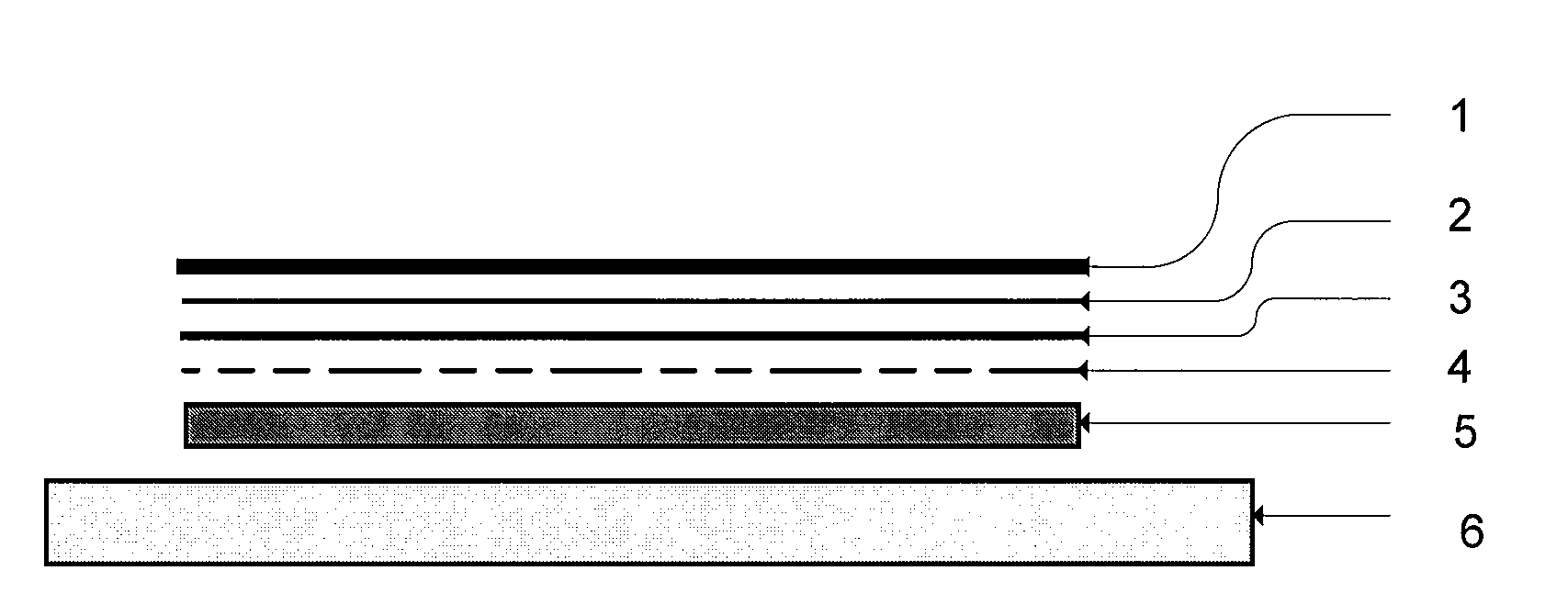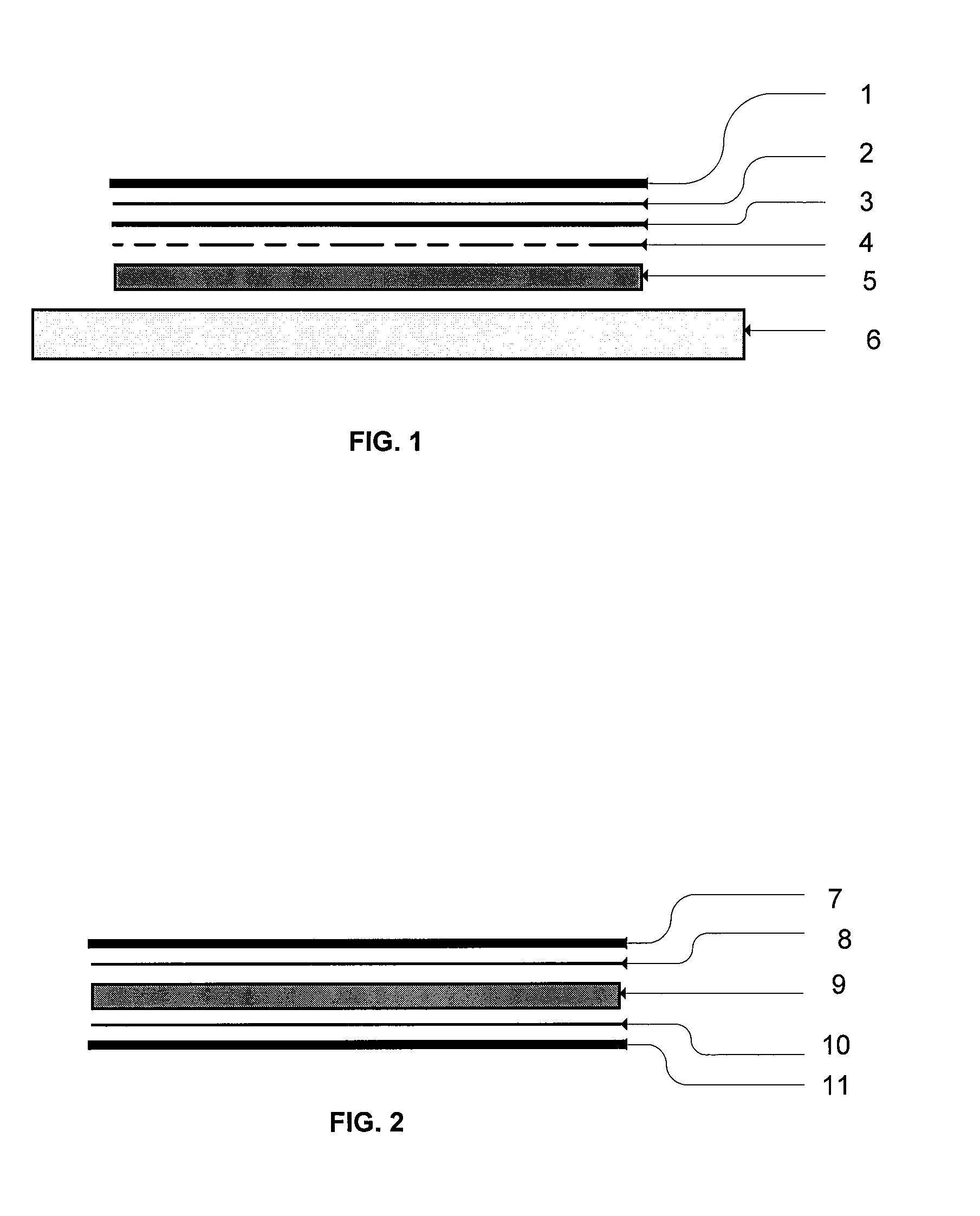Top coating for indoor and outdoor temporary removable graphics and system and method for making, applying and removing such graphics
a technology for temporary removable graphics and top coating compositions, applied in coatings, layered products, chemistry apparatus and processes, etc., can solve problems such as difficult to achieve, complete absence in the market of a suitable system, damage to the underlying surface,
- Summary
- Abstract
- Description
- Claims
- Application Information
AI Technical Summary
Benefits of technology
Problems solved by technology
Method used
Image
Examples
example 1
[0091]Preparing a mixture of the solvents in Accordance with Table I:
[0092]The two formulations for the solvent mixtures used in preparing the coatings have slightly different proportions of the components, as these were required to achieve the optimum solubilities for the different resins used to prepare the various coatings.
[0093]These blends produce two mixtures that may also be used as diluent reducers for thinning down the final coating to make it suitable for spraying applications. The theoretical evaporation rate for Reducer M1 is lower than Reducer M2, which makes M2 a slightly faster evaporating blend. It is necessary in colder conditions to have a slightly faster evaporation rate, whereas in warmer conditions a slower evaporating mixture is preferred. The term “retarder” is used for a blend of thinning solvents that has a slower evaporation rate compared to the blend that has a medium rate of evaporation. Hence, M1 may be considered a retarder, and M2 may be considered a r...
example 2
[0096]Preparing the Top Coating #M15 in Accordance with Table II:
[0097]100 lb. of the coating was prepared. Seventy-nine and 73 / 100 lb. of solvents mixture M1 (79.73%) was added to the mixing vessel. While mixing slowly, 11 and 96 / 100 lb. (11.96%) of CAB 553-0.4 Cellulose Acetate Butyrate powder from Eastman Chemical was gradually added into the liquid. The liquid was mixed for 30 minutes to ensure no big lumps of the agglomerated polymer remain in the liquid. Three and 99 / 100 lb. (3.99%) of acrylic B734 from DSM-NeoResins were gradually added to the liquid while mixing. Two and 66 / 100 lb. (2.66%) of acrylic BR106 from Dianal America were gradually added to the liquid while mixing. One and 33 / 100 lb. (1.33%) of SAIB 100 Sucrose Acetate Isobutyrate from Eastman Chemicals were gradually added to the liquid while mixing. 33 / 100 lb. (0.33%) of flow improver FX8 from Eagle Specialty Chemicals was gradually added to the liquid while mixing. Mixing was continued for about 45 minutes to ens...
example 3
[0099]Preparing the Top Coating #M15A in Accordance with Table III:
[0100]100 lb. of the coating was prepared. Seventy-five and 75 / 100 lb. of solvents mixture M2 (75.75%) was added to the mixing vessel. While mixing slowly, 16 and 41 / 100 lb. (16.41%) of CAB 553-0.4 Cellulose Acetate Butyrate powder from Eastman Chemical was gradually added into the liquid. The liquid was mixed for 30 minutes to ensure no big lumps of the agglomerated polymer remain in the liquid. Three and 79 / 100 lb. (3.79%) of acrylic B734 from DSM-NeoResins were gradually added to the liquid while mixing. Two and 53 / 100 lb. (2.53%) of acrylic BR106 from Dianal America were gradually added to the liquid while mixing. One and 20 / 100 lb. (1.20%) of SAIB 100 Sucrose Acetate Isobutyrate from Eastman Chemicals were gradually added to the liquid while mixing. 32 / 100 lb. (0.32%) of flow improver FX8 from Eagle Specialty Chemicals was gradually added to the liquid while mixing. Mixing was continued for about 45 minutes to e...
PUM
| Property | Measurement | Unit |
|---|---|---|
| thickness | aaaaa | aaaaa |
| temperatures | aaaaa | aaaaa |
| dry weight | aaaaa | aaaaa |
Abstract
Description
Claims
Application Information
 Login to View More
Login to View More - R&D
- Intellectual Property
- Life Sciences
- Materials
- Tech Scout
- Unparalleled Data Quality
- Higher Quality Content
- 60% Fewer Hallucinations
Browse by: Latest US Patents, China's latest patents, Technical Efficacy Thesaurus, Application Domain, Technology Topic, Popular Technical Reports.
© 2025 PatSnap. All rights reserved.Legal|Privacy policy|Modern Slavery Act Transparency Statement|Sitemap|About US| Contact US: help@patsnap.com


